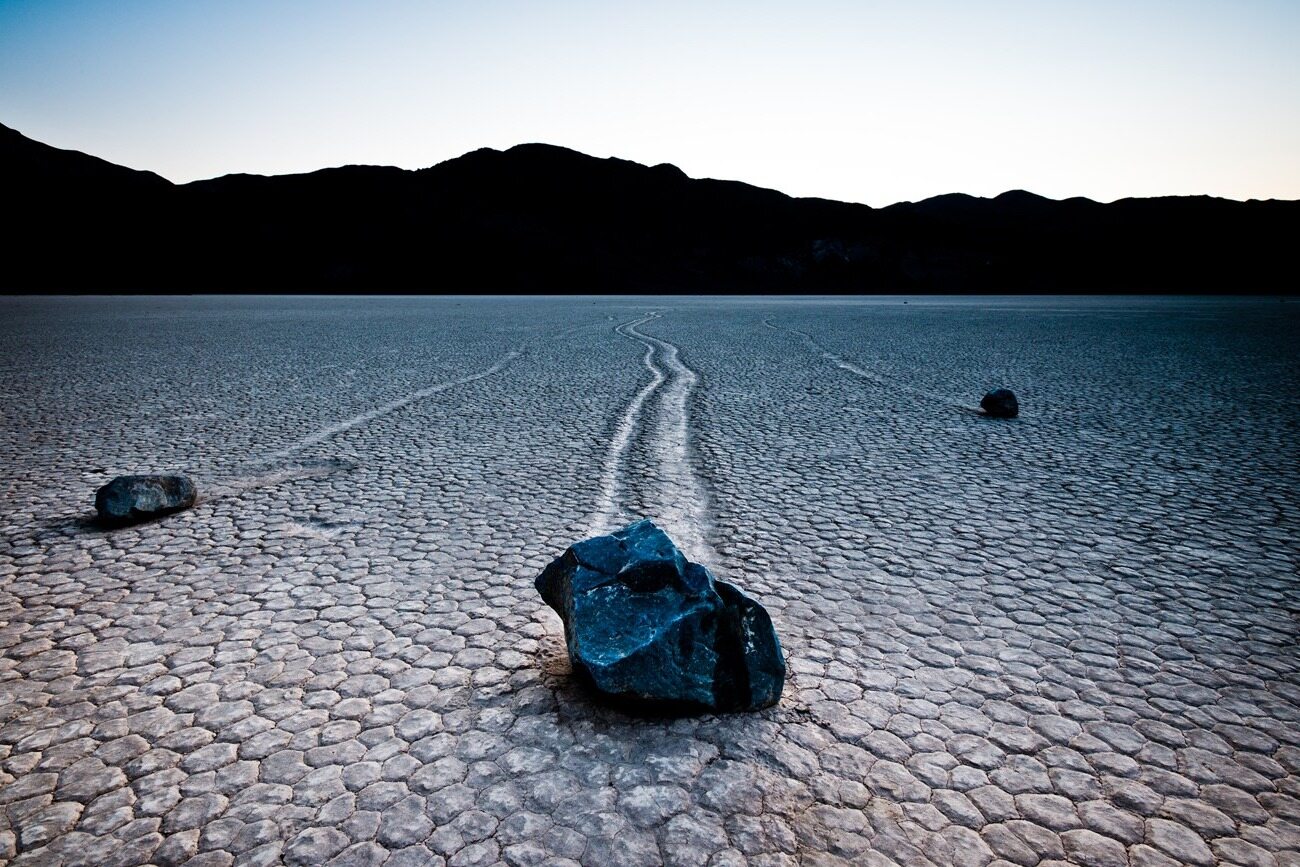Mystery Of Racetrack Playa’s Moving Rocks

Have you ever heard of Racetrack Playa's moving rocks? This dry lakebed in Death Valley National Park holds a fascinating secret. Large stones, some weighing hundreds of pounds, mysteriously move across the desert floor, leaving long trails behind them. No one sees these rocks in motion, yet their paths are clear. Scientists have puzzled over this phenomenon for decades. Some thought wind or ice might be responsible, but recent studies suggest a different explanation. Curious about what makes these rocks move? Let's dive into the mystery and uncover the science behind this natural wonder.
The Enigma of Racetrack Playa
Racetrack Playa, located in Death Valley National Park, is famous for its mysterious moving rocks. These rocks, some weighing hundreds of pounds, leave long trails behind them as they seemingly glide across the dry lake bed. Scientists and visitors alike have been fascinated by this phenomenon for decades.
How Do the Rocks Move?
The movement of these rocks has puzzled researchers for years. Various theories have been proposed, but recent studies have provided some answers. Let's look at the key factors that contribute to this natural wonder.
Ice Sheets: During cold winter nights, thin sheets of ice form on the playa. As the sun rises, the ice begins to melt and break into large floating panels. These panels, driven by light winds, push the rocks across the wet, slippery surface.
Wind: Wind plays a crucial role in moving the rocks. Even a gentle breeze can push the ice panels, and consequently the rocks, across the playa. The combination of wind and ice is essential for this movement.
Water: Occasional rainstorms create a thin layer of water on the playa. This water, combined with the ice and wind, reduces friction and allows the rocks to slide more easily.
Why Is Racetrack Playa Unique?
Racetrack Playa's unique conditions make it one of the few places on Earth where this phenomenon occurs. The combination of its flat surface, specific climate, and geological features create the perfect environment for the moving rocks.
Flat Surface: The playa is remarkably flat, which is essential for the rocks to move without significant obstacles. This flatness ensures that even slight forces can cause movement.
Climate: The specific climate of Death Valley, with its extreme temperatures and occasional rain, contributes to the formation of ice sheets and the presence of water on the playa.
Geological Features: The playa's composition, primarily clay and silt, creates a smooth surface that reduces friction and allows the rocks to slide more easily.
Visiting Racetrack Playa
If you're planning a trip to Racetrack Playa, there are a few things to keep in mind. The remote location and harsh conditions require some preparation, but the experience is well worth it.
Accessibility: Racetrack Playa is located in a remote part of Death Valley National Park. A high-clearance vehicle is recommended for the rough, unpaved roads leading to the playa.
Best Time to Visit: The best time to visit is during the cooler months, from October to April. During this time, the weather is more bearable, and the chances of witnessing the moving rocks are higher.
Safety Precautions: Bring plenty of water, sun protection, and a map. Cell service is limited, so it's essential to be prepared for the harsh desert conditions.
The Fascination Continues
The mystery of Racetrack Playa's moving rocks continues to captivate scientists and visitors. While recent studies have provided some answers, the phenomenon remains a fascinating example of nature's wonders.
Nature's Enigma
Racetrack Playa's moving rocks remain one of nature's most intriguing mysteries. These stones, some weighing hundreds of pounds, glide across the dry lake bed, leaving long trails behind. Scientists believe a combination of ice, water, and wind causes this phenomenon. Thin ice sheets form under the rocks, and when the ice melts, it creates a slick surface. Wind then pushes the rocks, making them slide. Despite this explanation, seeing the rocks in person feels almost magical. The playa's remote location in Death Valley National Park adds to its allure. Visiting requires preparation due to extreme temperatures and rough terrain. However, witnessing these mysterious moving rocks is worth the effort. They remind us of nature's power and the many secrets it still holds. If you ever get the chance, make the journey to Racetrack Playa. It's an experience you won't forget.

